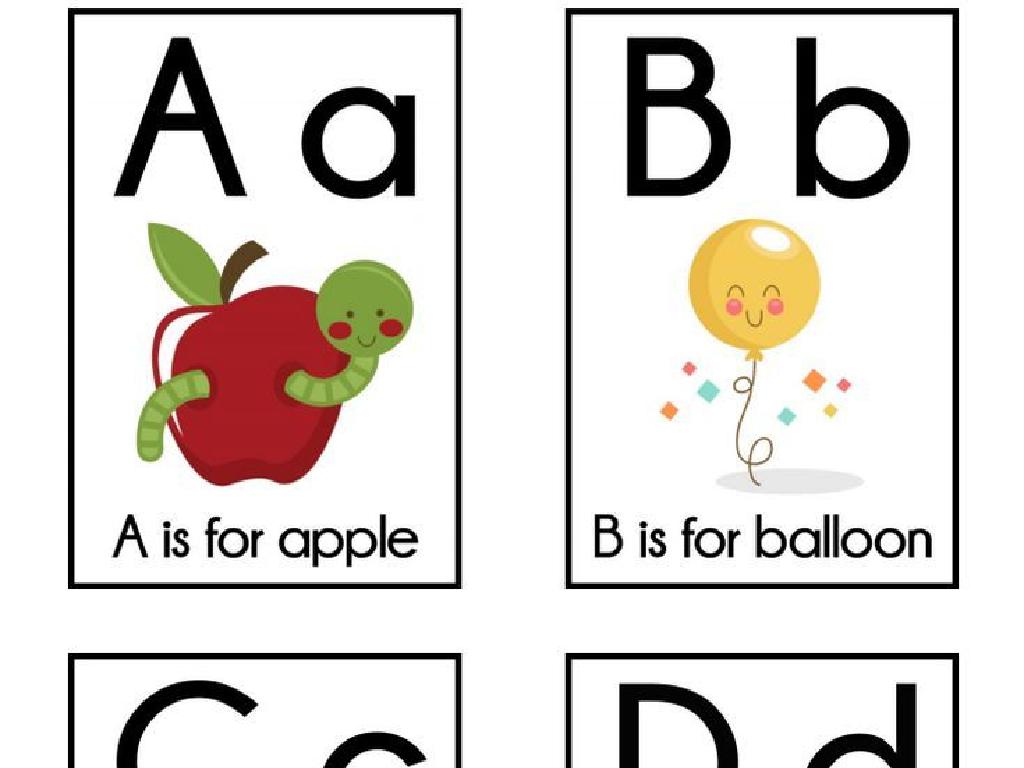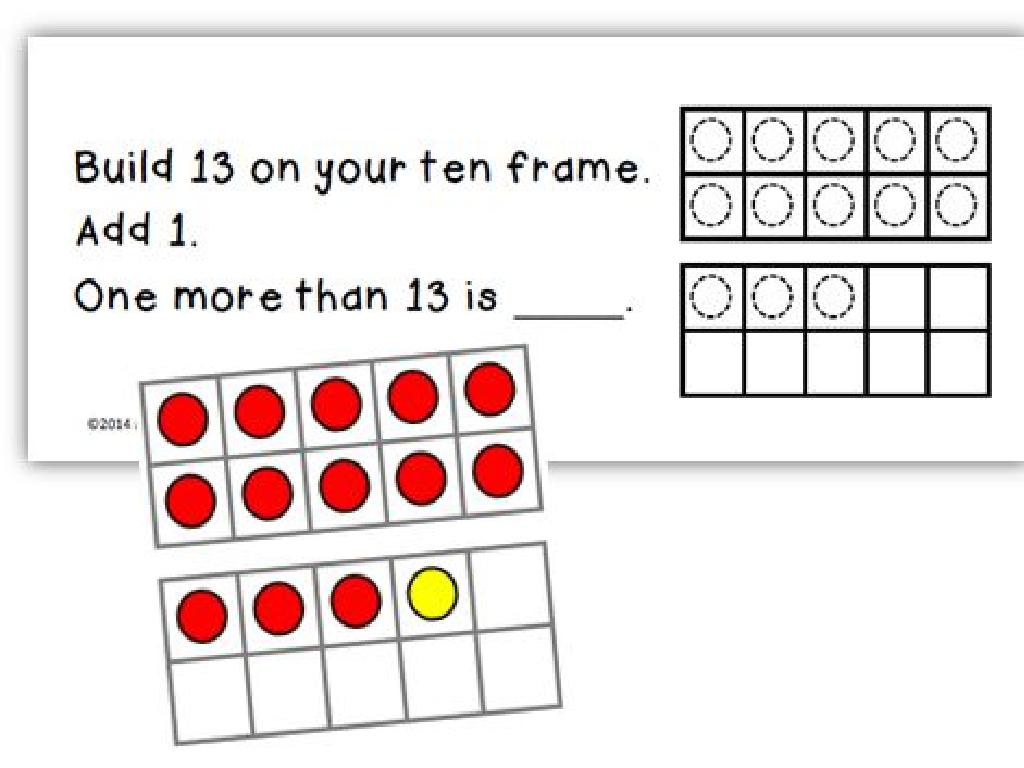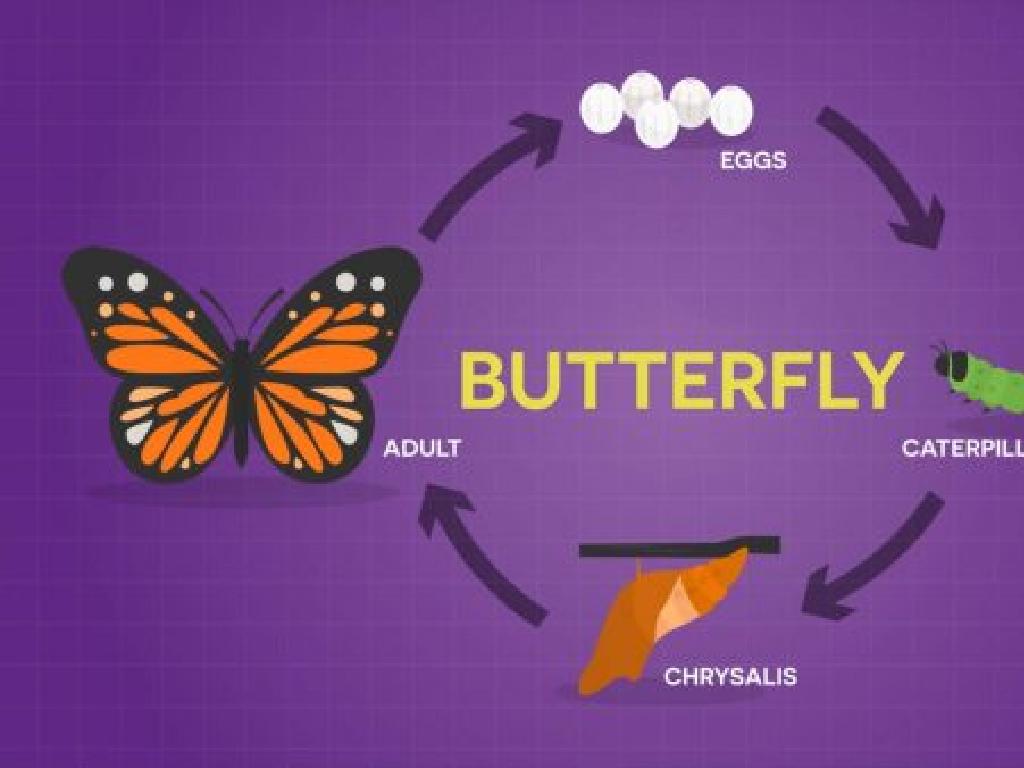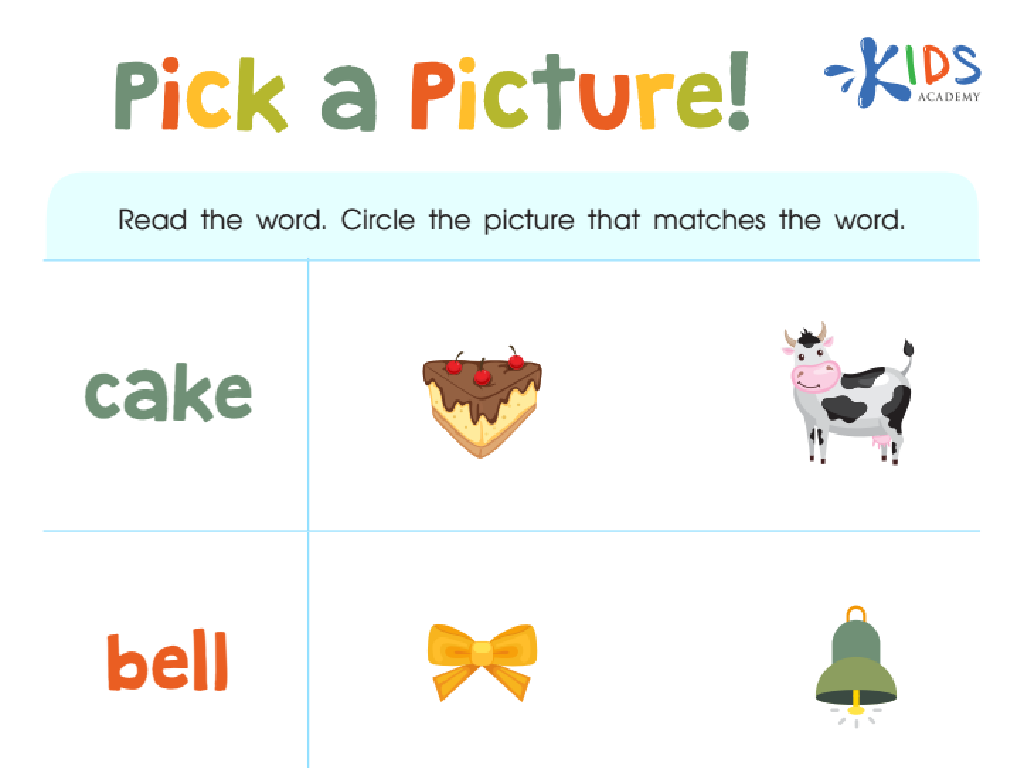Build Cube Trains To Add Up To 10 - Addition Sentences
Subject: Math
Grade: Kindergarten
Topic: Addition Up To 10
Please LOG IN to download the presentation. Access is available to registered users only.
View More Content
Welcome to Addition!
– Greetings, young math explorers!
– Today’s goal: Add numbers up to 10
– Using cube trains for addition
– Cube trains are blocks connected to show a number
– Let’s build and learn together!
– We’ll make trains and add them to learn sums
|
This slide is designed to introduce Kindergarten students to the concept of addition in a fun and interactive way. Start by greeting the students warmly to create an inviting learning environment. Explain that the day’s lesson will focus on learning to add numbers up to 10. Introduce the concept of cube trains, which are a series of connected cubes that represent numbers. These will serve as a visual and tactile aid to help students understand how numbers combine to make new sums. Encourage the children to participate by building their own cube trains and combining them with those of their classmates to see how different numbers add up to 10. This hands-on activity will help solidify their understanding of addition. Be prepared with several examples and possible configurations for the cube trains to ensure that all students can engage with the lesson.
Learning to Add with Cube Trains!
– What is addition?
– Putting together numbers to find a total.
– Adding makes numbers bigger
– When we add, our number grows!
– The ‘+’ sign
– It tells us to add the numbers together.
– Let’s build cube trains!
– Use cubes to make trains that add up to 10.
|
This slide introduces the concept of addition to Kindergarten students. Start by explaining that addition is the process of combining two or more numbers to find out the total amount. Emphasize that when we add, the number we get is bigger than the numbers we started with. Show the ‘+’ sign and explain that it is a special symbol that tells us to add. To make this concept tangible, use cube trains as a hands-on activity where students physically combine cubes to create trains that add up to 10. This visual and interactive approach helps young learners grasp the concept of addition in a fun and engaging way. Prepare different colored cubes and encourage students to explore various combinations that result in 10.
Building Cube Trains to Learn Addition
– What are cube trains?
– Cube trains are blocks connected to form a train.
– Each cube represents a number
– Imagine each block as a different number, like 1, 2, 3…
– Building trains for number 10
– We’ll use our cube trains to show all the ways to add up to 10.
– Exploring addition with cubes
– See how adding different cubes gets us to 10!
|
This slide introduces the concept of cube trains as a visual and tactile method for teaching addition to Kindergarten students. Each cube represents a single unit, and by connecting these cubes, students can form a ‘train’ that visually represents a number. The goal is to create various combinations of cube trains that all add up to the number 10, demonstrating the concept of addition in a hands-on way. Encourage students to experiment with different combinations, such as 1+9, 2+8, etc. This activity will help solidify their understanding of addition up to 10. Prepare to assist students in building their trains and guide them in understanding that there are multiple ways to reach the same sum.
Making 10 with Cube Trains
– Start with 10 cubes together
– Break into two smaller trains
– Split the train and count each part
– Discover two numbers that make 10
– Example: 6 cubes and 4 cubes add to 10
– Practice making different combinations
– Try 5 cubes and 5 cubes, or 7 cubes and 3 cubes
|
This slide introduces the concept of addition by using cube trains to make the number 10. Start by showing a train of 10 cubes. Then, demonstrate breaking the train into two groups and counting the cubes in each group to show how they add up to 10. This visual and hands-on approach helps kindergarteners understand that the number 10 can be made from different pairs of numbers. Encourage the students to explore various ways to break the train of 10 into two parts, reinforcing the idea that there are multiple combinations that result in the same sum. Provide guidance and ensure that each student has a chance to practice with actual cube trains or manipulatives to solidify their understanding.
Building Cube Trains for Addition
– What is an addition sentence?
– It’s like a math story for what we build
– Example: 4 cubes + 6 cubes
– 4 blue cubes and 6 red cubes together make 10
– Making a train of 10
– All aboard the number 10 train!
– Write your own addition sentences
– Use your cubes to make 10 in different ways
|
This slide introduces the concept of addition sentences using cube trains, a hands-on activity perfect for Kindergarten students. Start by explaining that an addition sentence is a math story that shows how we combine smaller groups to make a bigger one. Use physical or visual cubes to demonstrate how 4 and 6 cubes can be combined to make a train of 10. Encourage the students to use different colored cubes to represent different numbers and to write down the addition sentences they’ve created. For example, they might build a train with 5 green cubes and 5 yellow cubes and write the sentence 5 + 5 = 10. Provide a variety of cubes and let the students explore different combinations to make 10, reinforcing the concept of addition up to 10.
Let’s Practice Together: Building Cube Trains
– Build your own cube trains
– Create a train totaling 10 cubes
– Use different colored cubes for each number
– Share your addition sentence
– Example: 4 blue cubes + 6 red cubes = 10 cubes
– Enjoy learning addition!
|
This slide is for a hands-on class activity where students will engage in building their own cube trains to understand addition up to 10. Provide students with a variety of colored cubes and ask them to make a train of cubes that adds up to 10. Encourage them to use different colors to represent different numbers, which will help them visualize the addition process. Once they’ve built their train, have them write down the addition sentence that represents their cube train. For example, if they used 4 blue cubes and 6 red cubes, the sentence would be 4 + 6 = 10. After building, students will share their sentences with the class, fostering a collaborative learning environment. The teacher should circulate the room, offering guidance and ensuring each student understands the concept. Possible variations for different students could include using more or fewer cubes, or challenging them to find all the different combinations that add up to 10.
Class Activity: Cube Train Creations
– Build your own cube train to make 10
– Partner up to explore ways to make 10
– Draw your cube trains
– Use colors to differentiate each cube
– Write the addition sentences
– Example: 4 red cubes + 6 blue cubes = 10 cubes
|
In this hands-on activity, students will use physical cubes to build ‘trains’ that add up to the number 10. This will help them visualize the concept of addition and understand that there are multiple combinations that can result in the same sum. Encourage students to work in pairs to foster collaboration and idea sharing. After building their cube trains, have them draw a representation of their creation and write out the corresponding addition sentence. For example, if a student has a train with 4 red cubes followed by 6 blue cubes, they would write ‘4 + 6 = 10’. Provide a variety of cube colors to help differentiate between the addends in each train. Possible activities for different students could include creating the longest possible train, using the fewest colors, or finding all possible combinations to make 10.
Review and Share: Cube Trains
– Review our cube trains
– Share your train and math sentence
– Show your cube train and say your addition sentence out loud
– Discuss what we learned
– Talk about different ways we made 10
– Reflect on adding to 10
– How can we use cube trains to help us add other numbers?
|
This slide is meant to consolidate the learning experience of building cube trains to understand addition up to 10. Encourage the students to look at their own and their classmates’ cube trains and observe the different combinations that make 10. Each student should have the opportunity to present their cube train and corresponding addition sentence to the class, fostering a sense of accomplishment and sharing knowledge. Discuss the various strategies the children used to reach 10, highlighting that there are multiple ways to add to 10. Use this time to reinforce the concept that addition is about combining smaller groups to make a larger one. For the teacher’s notes, include suggestions for facilitating the discussion, such as prompting students with questions and encouraging them to explain their thought process.
Goodbye and Great Job!
– Fantastic work learning addition!
– Addition means putting numbers together.
– Practice with cube trains at home!
– Use your cubes to make trains that add up to 10.
– Keep adding up to 10!
|
This slide is a positive reinforcement for the students, congratulating them on their efforts in learning addition up to 10. It’s important to remind them that addition is the process of combining numbers to find a total. Encourage them to continue practicing at home using cube trains, which are a hands-on tool that helps visualize the concept of addition. Provide suggestions for parents to help their children practice, such as creating different combinations of cube trains that equal 10. Also, consider sending home a worksheet with additional practice problems or fun activities that involve adding up to 10.





